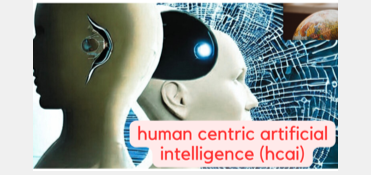Author: Rajagopal Tampi
One of the biggest issues responsible for bad AI design is “bias”. It is also one of the most difficult to eliminate. So we will explain what are the most common biases possible in AI systems and what causes them?
Common types of bias which can occur in AI systems are explained below with the technical reason for such bias occurring :-
1. Gender Bias: AI systems trained on historical data may exhibit biases against women, leading to gender-based discrimination. For instance, a recruitment AI tool might reject female applicants simply because the training data predominantly consisted of male hire data.
2. Racial Bias: AI systems can inadvertently perpetuate racial discrimination if they are trained on data that reflects real-world biases. This can result in, for example, facial recognition systems being less accurate for individuals with darker skin tones or misidentifying people from certain racial or ethnic groups.
3. Socioeconomic Bias: AI systems might discriminate against individuals from lower socioeconomic backgrounds if historical data disproportionately represents higher socioeconomic groups. This bias can manifest in predicting creditworthiness, loan approvals, or offering financial services.
4. Age Bias: AI systems trained on biased age-related data can lead to discriminative outcomes. For example, an AI-driven healthcare system might provide less accurate diagnostic suggestions for older patients or deny certain treatments based on age.
5. Ableism Bias: AI systems may indirectly discriminate against individuals with disabilities if the underlying data is biased or the AI model is not designed to accommodate diverse needs. This can negatively impact areas such as accessibility, automated customer support, or assistive technologies.
6. Confirmation Bias: AI systems can amplify existing beliefs or stereotypes if trained on biased data or continuously reinforced with biased feedback. This can lead to a reinforcement of existing prejudices and a lack of exposure to alternative perspectives.
7. Language Bias: AI language models can exhibit biases based on linguistic patterns in the training data. For example, a language model trained on online texts could generate sexist or offensive sentences due to the prevalence of such content in the training data.
Another cut for analysing bias in AI systems would be using more abstract classifications. These comprise of biases such as Algorithmic bias, Prejudicial bias, Measurement bias, Exclusion bias, Recall bias, Observer bias and Representation bias1.
In fact, most data anywhere, invariably has some sort of bias embedded.
The origins of biases are from corrupt data, during data aggregation, model selection, non-representation of communities and groups, and even end-user interpretation amongst others.
Therein lies the great importance of sourcing and preparing quality, relevant, inclusive, representative un-manipulated, accurate and error free data for training ML systems. It is necessary to mention here that sometimes and in some use cases data may not be available to train unbiased models. Models themselves could show hallucinational behaviours which are not easily explainable.
It is true that human beings also suffer from inherent biases based on our character, nature, upbringing, social circle and other factors. This being the case, it is important to understand that the way forward for managing bias in ML systems should be to minimise it and fix it whenever it occurs, rather than cry wolf when it happens. It is also the duty of coders and data scientists to be suitably trained to identify and avoid biases at the design and data preparation phase itself. The monitoring and evaluation of coders and data scientists with contingent penalties and disincentives is essential.
Perhaps, we should take heart at this point, because it would be much easier to reduce bias in AI systems significantly through sensible design and management, than change our rigid human natures and thinking processes chained to our values systems, beliefs and egos which are the root cause of human bias! So let us use this opportunity to “unbias” AI systems effectively.
Reference:
1 Understanding & Reducing Bias In Training Data For AI/ML Projects by Ella Wilson Published in Towards Data Science May 31, 2022

